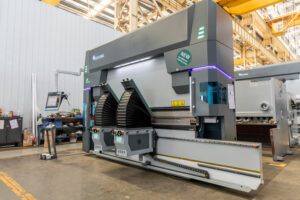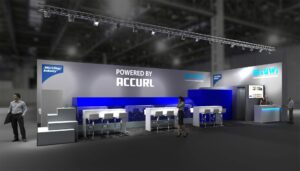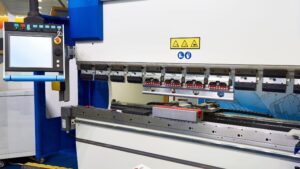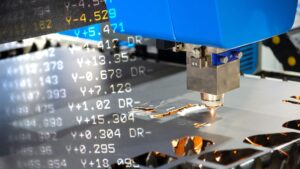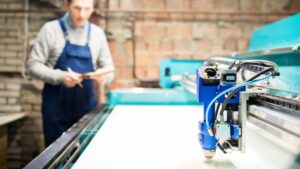In today’s advanced manufacturing landscape, the transformative potential of laser cutting has garnered significant attention. A technology once limited to specialized applications is now a cornerstone in myriad industries. Dive in to understand the many advantages of laser cutting and how it stands tall amongst other cutting methods like plasma cutting and waterjet cutting.
What exactly is Laser Cutting?
Laser cutting is a technology that uses a laser to slice materials. Essentially, a laser cutter focuses a high-powered laser onto a material’s surface. This concentrated energy source melts, burns, or vaporizes the material, leaving behind a precise and clean cut. Managed by computer programs, laser cutting offers unmatched precision and speed compared to traditional cutting methods.
What advantages does Laser Cutting offer?
Here’s an extensive exploration of the varied advantages laser cutting offers, setting it apart in the domain of metal fabrication and beyond.
Precision and Accuracy
At the heart of laser cutting’s appeal is its precision accuracy. Unlike other cutting methods, lasers provide pinpoint accuracy, ensuring parts and products adhere to strict tolerances. This precision is especially beneficial for industries where even a minor discrepancy can lead to significant quality issues. In comparison to plasma cutting or waterjet cutting, the laser cutting process stands out due to its meticulous attention to detail.
Moreover, the laser beam used in the cutting process is generated by computer programs. This computer-controlled aspect ensures that the process has minimal human intervention, and thus, the results are far more consistent. With laser cutting services being utilized by various manufacturing industries, the demand for such precision and consistency becomes more evident.
Benefits of Laser Cutting Precision:
- Greater adherence to design specifications.
- Reduction in waste due to errors.
- Better product quality leading to customer satisfaction.
- Fewer reworks, leading to a more streamlined manufacturing process.
Versatility in Material Handling
Laser cutters are not just machinery; they’re the epitome of versatility in the realm of cutting technologies. Whether you’re dealing with metals like stainless steel, aluminum, or titanium, or working with non-metals such as wood, plastics, and paper, laser cutting machines showcase a commendable ability to handle a variety of materials.
With such adaptability, laser cutters are a prized asset for metal fabrication units and other manufacturing companies. And while other methods like CNC machining or flame cutting have their applications, the advantages of laser cutting in material handling are hard to contest.
Materials Commonly Managed by Laser Cutters:
- Metals: Stainless steel, aluminum, titanium, copper, etc.
- Non-Metals: Acrylic sheets, wood, plastic, paper, and even certain fabrics.
- Reflective Materials: While some cutting processes struggle with these, laser cutters can effectively handle them.
Increased Speed and Efficiency
In a manufacturing industry driven by delivery speeds and throughput, laser cutting offers manufacturers a significant advantage. Beyond just the speed of the actual cut, the advantages come from reduced setup times, diminished tool changeover durations, and the outright absence of physical tooling. All these efficiencies mean that products can reach the market in record time, which is a considerable boon for businesses needing to meet tight delivery schedules.
The laser cutting process is also less labor-intensive than many of its counterparts, such as plasma cutting. With the rise of automation and computer-controlled operations, laser cutting machines can handle larger workloads with minimal human intervention.
Efficiencies Gained through Laser Cutting:
- Minimal material wastage, leading to cost savings.
- Streamlined operation with computer-controlled precision.
- Greater productivity with faster setup and fewer downtimes.
Cost-Effectiveness
Financially astute businesses quickly recognize the advantages of laser cutting in terms of cost. Apart from the direct savings from reduced wastage, the energy consumption of laser cutting machines, especially when compared to some traditional methods, is considerably lower. Additionally, as there’s less need for extensive repairs and maintenance, the long-term costs associated with these machines are more predictable.
Also, as the demand for more intricate designs and shapes in the manufacturing sector grows, the flexibility laser cutting offers can lead to more significant cost advantages over other less adaptable cutting methods.
Cost Benefits of Laser Cutting:
- Lower energy bills due to efficient energy consumption.
- Fewer instances of rework, translating to saved costs.
- Reduced maintenance expenses, especially when compared to older cutting processes.
- Greater product yield due to minimal wastage.
Flexibility in Design and Detailing
The advent of laser cutting technology has ushered in a new era of design possibilities. Engineers, artists, and manufacturers have a tool at their disposal that can bring the most intricate designs, patterns, and concepts to fruition. The advantages of laser cutting in this realm are unparalleled, as even the most delicate and intricate patterns can be achieved with precision accuracy.
The combination of computer programs and the capabilities of laser beams means that there’s a level of detailing achievable that was once thought impossible. Whether it’s for artistic creations or industrial components, the finesse laser cutters bring to the table is commendable.
Design Advantages with Laser Cutting:
- Ability to handle both large and small-scale projects with equal precision.
- Capable of dealing with intricate patterns and designs without compromising on quality.
- Reduced need for post-cut finishing due to clean and precise cuts.
Contactless Processing
One of the often-understated advantages is the contactless nature of laser cutting. Since the laser beam doesn’t physically touch the material it’s cutting, there’s a marked reduction in wear and tear on machinery. This not only prolongs the lifespan of the cutting tools but also decreases the likelihood of material damage, ensuring an enhanced precision accuracy in the finished product.
- Less Material Damage: Unlike traditional cutting methods like plasma cutting, the absence of physical contact in the laser cutting process means materials remain largely undisturbed.
- Prolonged Tool Lifespan: The machinery involved faces reduced strain, resulting in decreased maintenance and repair needs.
Reduced Finishing Needs
Laser cuts have become synonymous with their crisp edges and supreme finishes. Such meticulous results mean that parts frequently transition to the subsequent phase of manufacturing without an exhaustive post-processing requirement, which acts as a boon for manufacturing companies aiming to save time and cost.
- Superior Edges: Laser cutters yield smooth edges, reducing the need for further refinement.
- Cost and Time Efficiency: The diminished need for post-cut processing can translate to considerable savings in both time and money.
Reliability and Consistency
The manufacturing industry often benchmarks against consistency, a criterion where laser cutting machines shine brilliantly. Their inherent ability to replicate the same cut repeatedly not only champions product quality but also assures manufacturers of consistent results throughout a production run.
- Predictable Outcomes: Laser cutting offers consistent outputs, even over long periods.
- Enhanced Product Quality: Consistent cuts translate to uniform products, meeting stringent industry standards.
Automation and Customization
The confluence of laser technology and computer programs has ushered in a new era of manufacturing. Tailored cutting processes specific to projects become feasible, offering manufacturers both enhanced efficiency and amplified product quality.
- Flexible Designs: With computer-aided designs, laser cutting services can craft an extensive variety of shapes and patterns.
- Reduced Human Intervention: The automation aspect minimizes manual handling, streamlining the entire process.
Safety in Operations
Laser cutting, when juxtaposed with its counterparts, emerges as inherently safer. The encapsulated nature of the laser cutting setup curtails potential hazards, sculpting a safer working environment.
- Enclosed Setups: Many laser cutters operate within enclosed systems, reducing risks.
- Minimized Physical Risks: Without the need for manual tool changeovers, operators face fewer physical risks.
Reduced Power Consumption and Energy Efficiency
Navigating through an era punctuated by energy concerns, laser cutting conspicuously stands tall. When benchmarked against cutting technologies such as plasma and waterjet cutting, lasers are considerably more energy-efficient. This alignment with green initiatives is increasingly becoming a magnet for modern businesses.
- Lower Energy Bills: Using laser cutting machines can translate to noticeable reductions in energy expenses.
- Eco-Friendly: By consuming less power, laser cutting indirectly supports environmental sustainability efforts.
What are the Limitations or Disadvantages of Laser Cutting?
Laser cutting is a precise and efficient process utilized extensively in the manufacturing industry. But like any technology, it has its drawbacks, and understanding these is essential for those in the field of metal fabrication and manufacturing.
Some Products Evaporate
Indeed, one cannot overlook the limitations laser cutting presents. For instance, when engaged with specific materials such as plastics, the intense heat from the laser cutter can cause these materials to evaporate rather than cut cleanly. This is a particular concern for manufacturers, especially when precision accuracy is crucial. It’s worth noting that:
- Implementing specific device adjustments can mitigate this issue.
- However, these changes to the laser cutting machines often come at a substantial cost, making it a less attractive solution for some.
Calls For Experts
Harnessing the full potential of laser cutting machines isn’t a walk in the park. Expertise is critical:
- Laser cutting services often emphasize the importance of skilled professionals.
- Without these machine operators, identifying issues and ensuring the precision and quality of cuts can become challenging.
- Given the shortage of such skilled experts in the market, hiring becomes not just a need but also a cost-intensive affair.
Dangerous Gases and Smoke
Safety is paramount in the manufacturing industry. With laser cutting, especially when working on materials like plastics, there’s a release of toxic fumes and gases. These pose health risks and need efficient handling:
- Manufacturers need to invest in ventilation and exhaust systems.
- Proper safety protocols must be in place to protect workers from inhaling these harmful gases.
Limitation on Material Thickness
Laser cutting offers great flexibility, but it’s not without constraints:
- The process has a limitation on the thickness of the materials it can effectively cut.
- While laser cutting machines boast versatility, when it comes to extremely thick materials, other cutting methods like plasma cutting or even waterjet cutting might be a more efficient choice.
- For projects that involve thicker sheets or materials beyond a specific range, manufacturing companies might need to resort to alternatives to laser cutting.
Upfront Costs
The initial investment associated with laser cutting technology can be substantial. For businesses, especially smaller ones, this is a crucial factor to consider:
- The machinery itself, which harnesses laser technology, is an expensive asset.
- Installation charges, often overlooked, add to the initial costs.
- Training is indispensable. To operate these machines efficiently and safely, companies need to invest in training their staff, which adds to the overall expenses.
Conclusion
Laser cutting has undeniably revolutionized the manufacturing industry, offering a myriad of benefits from precision and speed to cost savings.
While it isn’t without its disadvantages, its transformative impact on modern manufacturing cannot be denied. As the technology continues to evolve and become more accessible, it’s poised to further shape the future of production across various sectors.


